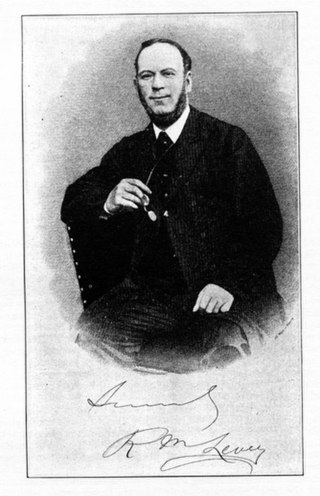Related Research Articles

James Napper Tandy, known as Napper Tandy, was an Irish revolutionary and a founder of the United Irishmen. He experienced exile, first in the United States and then in France, for his role in attempting to advance a republican insurrection in Ireland with French assistance.
"Star of the County Down" is an Irish ballad set near Banbridge in County Down, Ireland. The words are by Cathal MacGarvey (1866–1927) from Ramelton, County Donegal. MacGarvey's song was first collected in Herbert Hughes Irish Country Songs. The tune is traditional, and may be known as "Dives and Lazarus" or "Kingsfold".

Seán Ó Riada, was an Irish composer and arranger of Irish traditional music. Through his incorporation of modern and traditional techniques he became the single most influential figure in the revival of Irish traditional music during the 1960s.
"The Bonnie Earl o' Moray" is a popular Scottish ballad, which may date from as early as the 17th century.
"Streets of Laredo", also known as "The Dying Cowboy", is a famous American cowboy ballad in which a dying ranger tells his story to another cowboy. Members of the Western Writers of America chose it as one of the Top 100 Western songs of all time.

Aloys Fleischmann was an Irish composer, musicologist, professor and conductor.

"The Rising of the Moon" is an Irish ballad recounting a battle between the United Irishmen, led by Theobald Wolfe Tone, against British forces during the Irish Rebellion of 1798.
"The Maid and the Palmer" is an English language medieval murder ballad with supernatural/religious overtones. Because of its dark and sinister lyrics, the song was often avoided by folk singers. Child's main text in English comes from the seventeenth century ballad collection compiled by Thomas Percy, supplemented by a nineteenth century fragment recalled by Sir Walter Scott, although both Child and later scholars agree that the English language version(s) of the ballad derive from an earlier Continental original or "Magdalene ballad" that is based upon a medieval legend associated with Mary Magdalene, in which her story has become conflated with that of the Samaritan woman at the well in the Gospel of John. The ballad was present in oral tradition in Scotland in the early years of the nineteenth century but was subsequently lost there, however versions have since been recovered in Ireland, in particular among the Irish Traveller community, with an intervening gap of some 150 years. A small fragment of the ballad has also been claimed to have been recovered in the US, but the veracity of this record is disputed. The "palmer" of Child's title, as included the Percy MS version, refers to a pilgrim, normally from Western Europe, who had visited the holy places in Palestine and who, as a token of his visits to the Holy Land, brought back a palm leaf or a palm leaf folded into a cross. In the ballad the palmer, as a holy man, has the ability to see the Magdalene character/protagonist's past in which she has borne and buried numerous children and to prescribe what fate awaits her in the hereafter, in the form of a set of seven year penances following which she will be absolved from her sins; in Continental versions, and in one variant collected in Ireland, the palmer is in fact Jesus.

The caubeen is an Irish beret, formerly worn by peasants. It has been adopted as the head dress of Irish regiments of Commonwealth armies.
"Boolavogue" is an Irish ballad commemorating the campaign of Father John Murphy and his army in County Wexford during the Irish Rebellion of 1798. It was composed by Patrick Joseph McCall in 1898, the centenary of the Rebellion.
"Polly Vaughn" is an Irish folk-song.
"Come All You Warriors" is a ballad concerning the 1798 Rising. The narrative focuses on the predominant figure in the Wexford Rising, Father John Murphy of the parish of Boulavogue.
Jimmy Murphy also known as 'Little Jimmy Murphy' is a song, possibly of music-hall origin, referencing the 1798 rebellion, which occurred largely in Wexford.
"Old Rosin the Beau" is an American folk song popular in the 19th century, probably of British or Irish origin, first published in Philadelphia during 1838.
"Foggy Dew" is the name of several Irish ballads, and of an Irish lament. The song chronicles the Easter Rising of 1916, and encourages Irishmen to fight for the cause of Ireland, rather than for the British Empire, as so many young men were doing in World War I.
The Coolin, or The Coolun, is an Irish air often characterised as one of the most beautiful in the traditional repertoire.

Richard Michael Levey, mostly known as R. M. Levey, was an Irish violinist, conductor, composer, and teacher. He was one of a handful of noted musicians who kept Dublin's concert life in the nineteenth century alive under difficult economic circumstances.
References
- Mitchell, Margaret (1964) [1936]. "Chapter 5". Gone with the Wind. Avon. p. 84. ISBN 0380001098.
- Sparling, Henry Halliday (1888). Irish minstrelsy. Being a selection of Irish songs, lyrics, and ballads. London: W. Scott.
- 1 2 3 4 5 Curtis, William Eleroy (1909). "The land of ruined castles". One Irish summer. New York: Duffield. pp. 298–299.
- ↑ Blaisdell, Robert (2002). Irish Verse: An Anthology. Courier Dover. p. 84. ISBN 0-486-41914-2.
- ↑ Sparling 1888, p. 15
- 1 2 Carpenter, Andrew (1998). Verse in English from Eighteenth-Century Ireland. Cork: Cork University Press. pp. 573, 613. ISBN 1-85918-103-1.
- ↑ Zimmermann 2002
- ↑ "The Ballad Poetry of Ireland". The Living Age: 107. 18 October 1845.
- ↑ "Celtic Gossip". The Celt: 94. April 1858.
- ↑ Vance, Norman (2002). Irish Literature Since 1800. Pearson Education. pp. 81–2. ISBN 0-582-49478-8.
- ↑ Sparling 1888, p. 11
- ↑ Sparling 1888, p. 13
- ↑ Aloys Fleischmann (ed.): Sources of Irish Traditional Music c.1600–1855, 2 volumes (New York: Garland Publishing, 1998), ISBN 0-8240-6948-X, vol. 2, p. 1129, tune no. 6187.
- ↑ Fleischmann (1998), vol. 2, p. 1165, tune no. 6367.
- ↑ "Namgay Doola". Kiplingsociety.co.uk. 5 May 2006. Retrieved 7 April 2015.
- ↑ "The Wearing of the Green". Amazon. Retrieved 7 October 2013.
- ↑ Examples taken from online catalogue of the British Library, http://catalogue.bl.uk.
- ↑ Axel Klein: O'Kelly. An Irish Musical Family in Nineteenth-Century France (Norderstedt: BoD, 2014), ISBN 978-3-7357-2310-9, pp. 211–213.
- ↑ Hayes, Edward (1855). The Ballads of Ireland (4th ed.). New York: Fullarton. Vol I, p. 271.
- ↑ "Wearing of the Grey! and Wearing of the Green". The Lester S. Levy Collection of Sheet Music. Johns Hopkins University. pp. Box 094, Item 173. Retrieved 25 July 2012.
- ↑ "Porter's Division Song" . Retrieved 4 June 2023.